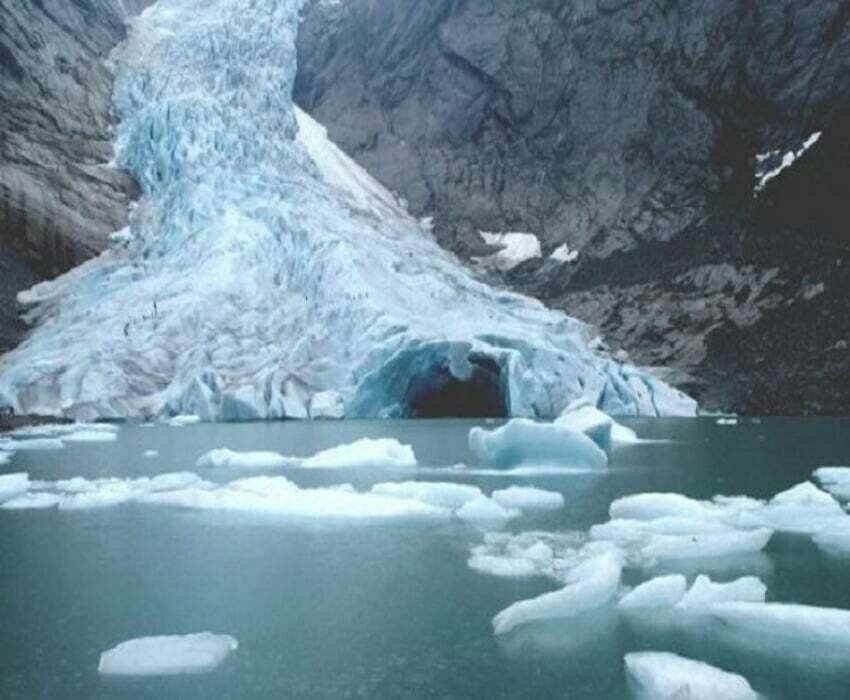Climate change and greenhouse gas emissions have increased Pakistan’s vulnerability to natural disasters like heatwaves, droughts, floods, and glacier melting.

In addition to being highly vulnerable to climate change, Pakistan was also dealing with a shortage of water resources as a result of rising temperatures and the quickly melting glaciers, which had an impact on the population.
Climate change and greenhouse gas emissions have increased Pakistan’s vulnerability to natural disasters like heatwaves, droughts, floods, and glacier melting.
Tauheedul Haq, a former conservator of the KP Forest Department, stated that Pakistan is highly vulnerable to weather patterns brought on by climate change, such as rising temperatures, unpredictable rains and floods, as well as the rapid melting of glaciers in Gilgit Baltistan and Khyber Pakhtunkhwa. Tauheedul Haq suggested that massive planting be done to combat these issues.
In Pakistan, he claimed, over 7,253 glaciers provide millions of people with fresh water supplies for drinking, irrigation, and industrial uses, and their preservation is crucial for the development of agriculture and the country’s economy.
He claimed that these glaciers were a unique source of freshwater for agriculture, irrigation, drinking, and industrial supplies to people, agriculturists, farmers, and industrialists living in those regions and downstream up to Karachi through the river Indus. They are primarily located in the Himalaya, Hindukush, and Karakorum regions of Gilgit Baltistan and Khyber Pakhtunkhwa.
Aside from the 2,253 large, medium, and small glaciers in Gilgit Baltistan, such as Baltoro (63 km), Biafo (67 km), and Batura (57 km), the Khyber Pakhtunkhwa province’s Upper Chitral district is also blessed with 500 glaciers, particularly in the Trichmir mountain ranges, which supply freshwater to Swat, Panjokra, Kabul, and Indus rivers throughout the year.
Outside of the polar region, he claimed Pakistan has more glaciers than any other region of the planet. “These glaciers continuously recharge our irrigated system in all provinces, and they have been a major source of water for our irrigation network,” said Tauheedul Haq.
He claimed that due to the rapid melting of glaciers, inadequate agricultural investment, flooding, rapid population growth, and water loss, Pakistan was on the verge of experiencing a water shortage and food insecurity.
In accordance with National Water Policy 2018, the amount of surface water available per person has decreased from 5,260 cubic metres per year in 1951 to approximately 1,000 cubic metres in 2016 and was likely to further decrease to approximately 860 cubic metres in the coming years, indicating our country’s transition from “water stressed” to “water scarce.”
In accordance with the policy, 1,000 cubic meters of water per capita must be available annually to prevent food and health consequences of water scarcity.
The urgency of this situation highlights the need for quick management and development of the nation’s water resources, particularly the completion of the Mohmand and Diamir Bhasha dams to preserve the priceless resources for future generations.
As was the case with the flooding last year, Tauheed warned that the unpredictable and changing precipitation patterns could have serious repercussions, including flash floods in Pakistan’s north and increasingly protracted droughts in the south. In addition to raising the risk of glacial lake outburst floods, he predicted that as glaciers recede, more glacial lakes similar to Gilgit Baltistan’s Atabad Lake would form (GLOF).
“The weather conditions have changed, with Khyber Pakhtunkhwa experiencing hot weather even in March and April, which was not the case decades ago due to a lack of rain and snowfall in addition to high deforestation,” he said.
According to Pakistan’s National Forest Policy 2015, the country was losing 27,000 hectares of forest each year.
Forest resources were under severe stress, particularly in privately and communally owned natural forests in Khyber Pakhtunkhwa and Gilgit Baltistan, where deforestation was also causing land degradation and a loss of biodiversity according to the policy. It also had a negative impact on agricultural yield and water quality at outlets.
“Pakistan’s average annual rainfall was between 400 millimetres (mm) and 1000 millimetres, while snowfall ranged about 60 inch,” he said. “More areas under forestry cover, especially in high a pasture and glacier zones, could increase the amount of snowfall.”
He said that the early start of summer season and subsequently heat waves lead to fast melting of glaciers, resulting in flooding and waste of fresh water.
According to Tauheed, the country’s forestry cover is only about 5%, which is low compared to the international standard of 25%. By bringing mountainous areas under afforestation through farm forestry and enclosures, Tauheed said, northern Pakistan’s glaciers will melt less quickly.
According to Ibrahim Khan, Deputy Project Director for the 10 billion tree afforestation project, numerous steps have been taken to preserve forest resources and promote sustainable growth in order to maintain the ecological balance and water supplies.
He claimed that due to the summer heatwave, all relevant departments were involved in preventing forest fire incidents. He claimed that the Forest Amendment Bill 2022 was passed to promote sustainable development and safeguard the environment.
The government intends to protect carbon rights for forests and designate them as national parks. Up until April 30, 2023, the 10 billion tree afforestation project will have planted 690.16 million plants. The province has put into effect REDD plus strategies, range land policies, and climate change policies as of 2016.
The federal government allocated Rs 3,950 million for three ongoing schemes: capacity building on water quality, Climate Resilient Urban Human Settlements Unit, and Up-scaling of Green Pakistan Programme in budget 2023-24.
Pakistan’s Bio-safety Clearing House (Pak-BCH) has been allocated Rs 100 million for GMOs regulation, Rs 2,800 million for watercourse improvement, 900 million for commend area enhancement, and Rs 700 million for commercial olive cultivation. These projects aim to mitigate climate change effects and control temperature.